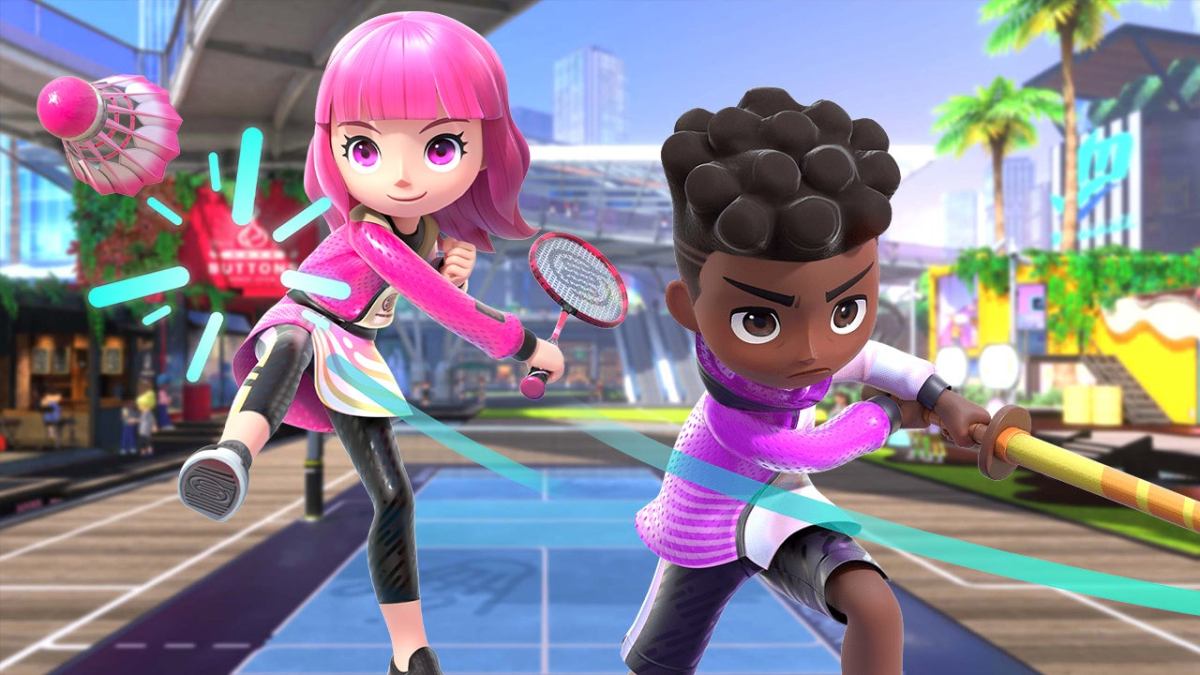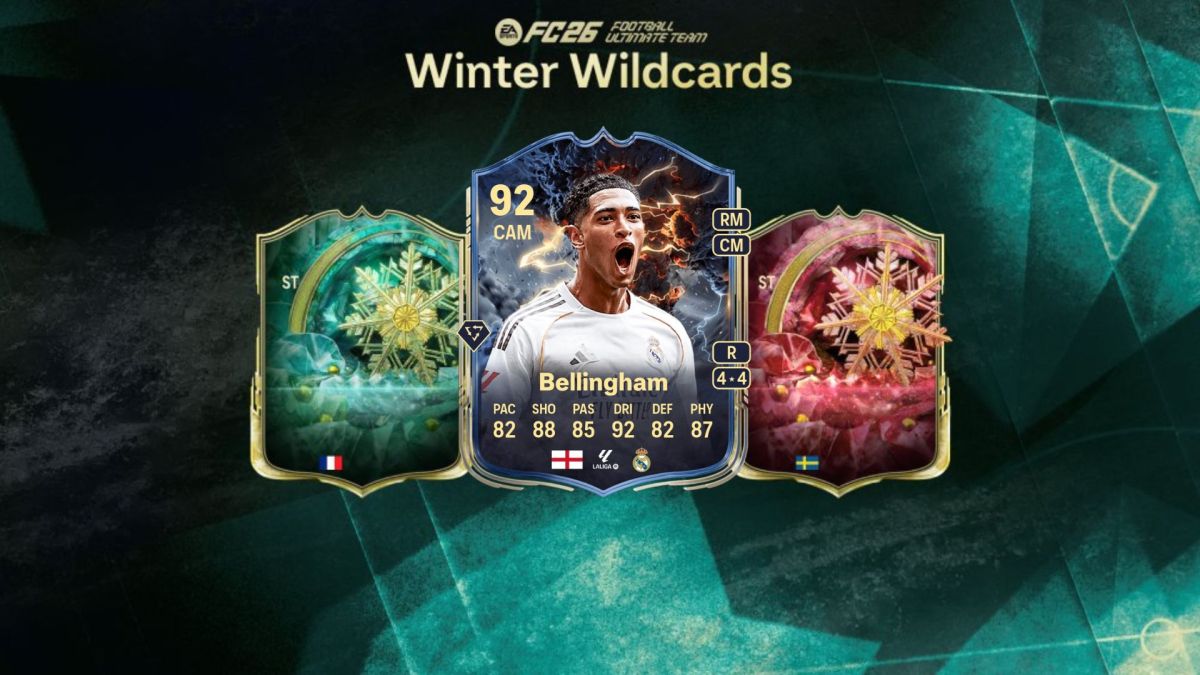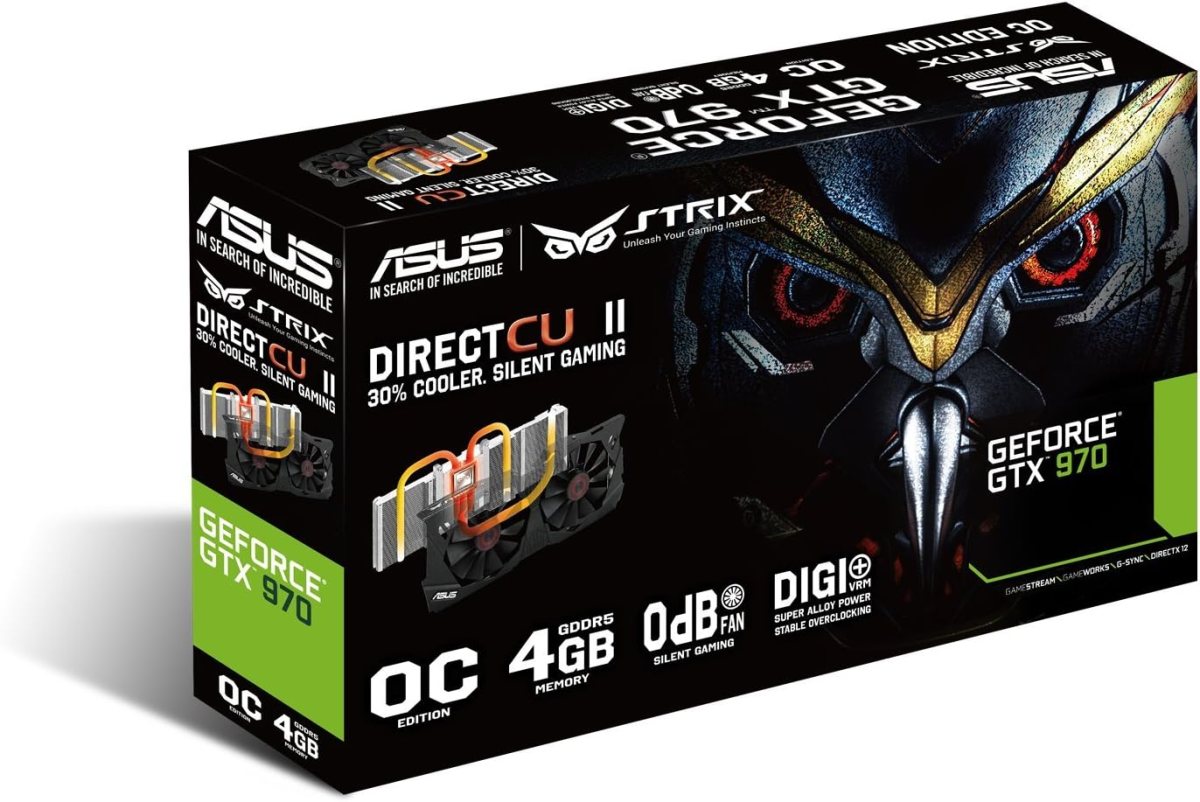A hole in one? Well that comes later
I have a mixed set of memories with the Wii Sports franchise. As an onboarding tool for the Wii as a whole, the original game was clearly a success; but my interest in it quickly waned. Slowly but surely that bonus demo disc became a series, with Wii Sports Resort and Wii Sports Club doing their best to iterate. And now we’ve come full circle with Nintendo Switch Sports, the first in the series to drop the “Wii” moniker. Not a whole lot has changed since the debut of the Nintendo Sports line, but it’s still a fun time provided that you can temper your expectations.
Nintendo Switch Sports (Nintendo Switch)
Developer: Nintendo EPD
Publisher: Nintendo
Released: April 29, 2022
MSRP: $39.99 (digital), $49.99 (physical with leg strap)

Soccer (1-2 players locally)
Soccer— by far the most polarizing minigame in my household — operates a lot like Rocket League. Not just in terms of the comically oversized ball, but the physics system as a whole. Unlike Rocket League though you’re running from place to place on foot (via an analog stick), with a very short sprint meter that governs how quickly you can traverse. I was immediately put off by the fact that it feels like the least active sport available: since most of the action (running) is done via an analog stick.
Online with more people involved, it’s a bit more exciting. There are more players on the field, which leads to more action and constant striking (read: swinging your arms), as well as some gasp-worthy “is it going to go in, no it just missed it!” moments. You also really get an extra strategic layer by knowing when to sprint, and when you can reach a destination through regular limitations. Locally, with a forced double Joy-Con control setup and restricted to two players, it’s a bit more of a bore.
Interestingly, you need the leg strap accessory to properly play the “Shoot-Out” mode, which we were provided with (and comes in the physical edition). It’s $10 more than the digital version to buy the right to use it “officially” in the box, but there are third-party solutions, and you may even have a Ring Fit Adventure leg strap left over.
All that to say: Soccer is arguably one of the weaker Nintendo Switch Sports experiences available, and that includes Shoot-Out mode. Shoot-Out is rote in that it only features one way to play; and tosses a ball at you in the same fashion over and over in a short “best score” sequence. The “take turns” setup is also antithetical to the party nature of the game, on top of requiring players to potentially pass and play the leg strap every time you swap.
This is something that could be patched in the future to add more variety, but probably won’t be.

Volleyball (1-4 players locally)
Following the “bump, set, spike” foundation of real-life volleyball, this one is more of a blast with a full party.
It’s a bit finicky to figure out the “optimal” timing that the game wants you to use at first (which is conveyed in the tutorial), but once you do, it gets a little more exciting. It’s also one of the easiest games to teach kids, as the motions are basic and still operate as normal even if you aren’t using an exact science. The intense moments that should be present in a motion-controlled group game are front and center.
As a sport that’s part of a greater compilation, it gets the job done as a “party game,” and it only requires one Joy-Con per person at maximum to get the full effect.

Bowling (1-4 players locally)
Bowling is the game that I felt like I needed to acclimate the most to in terms of Nintendo Switch Sports‘ motion controls — and I wasn’t alone. My family had issues coming to terms with letting go of the ball and getting a good roll. With the Joy-Con though, like most motion-based games, that experience does come with practice (including nuanced moves like hook shots).
Bowling benefits from a very relaxed setup that lets you either take turns traditionally, or all bowl at once with up to four players via split-screen. In that sense, it’s the most freeing game of the entire collection, as the number of options available should suit every group. One thing I do have on my wishlist is a more advanced “special” mode. This one claims that you’ll need to “overcome obstacles” that “change every time,” but ultimately it mainly comes down to putting a few bumpers in your way.
With that in mind, it can serve as a decent icebreaker for folks who want to switch things up: I could just go for more off-the-wall and truly variable ways to alter the experience.

Tennis (1-4 players locally)
As one of the original motion minigames, tennis still holds up.
It’s really hard to screw things up here, and the Joy-Con controls are fun, active, and responsive. Tennis follows suit with volleyball and forces doubles, no matter the player count, which is really annoying if you’re looking to enjoy a 1v1 match. On the player’s same team each double partner is filled in by a mirror image of the player itself (swinging your Joy-Con controls both of them): which is a fine option, but it would have been ideal if you could opt for true singles play.

Badminton (1-2 players locally)
On the flip side, badminton forces 1v1 for a different experience.
If you’re in the mood for doubles with a group, you could opt for tennis, and swap to badminton for 1v1 showdowns. Like tennis, the same tight motion controls are present, and badminton is arguably the most chill of all of the selections on offer in Nintendo Switch Sports.
There isn’t a whole lot I can say about badminton, because like a rock, it just is. It’s become one of the staple modes when my family feels like squaring off, and I wish there were at least one more minigame like it on top of what we already have.

Chambara [swordplay] (1-2 players locally)
Well, there is one other mode like badminton, at least!
Chambara returns yet again as one of the more overtly exciting Nintendo Switch Sports minigames; as you can enact easy digital violence on family members. Two people (max) will square off in a circular arena, where they’ll send their opponent into the dunk tank if they lose their footing. To push opponents off in a sumo-like fashion you’ll swing when they’re not blocking, or subsequently block their attacks and put them in a dizzying state for a moment.
Aiming the Joy-Con in a specific direction like a sword will block with a horizontal, vertical, or diagonal orientation, provided that you hold down the block button. Slashing in any of those directions, in turn, will constitute an attack. It sounds basic but there’s plenty of nuance involved, and you can either flail wildly with family members and have fun, or strategically attempt to best a master digital swordsman.
Chambara also offers up three variations of swords: standard, charged (where you can absorb blocked shots and eventually send them back with a power attack), and dual blades (with two Joy-Con). Each player can select a different playstyle, which puts chambara up there with bowling when it comes to diversifying the play experience. It’s still one of the best activities any game with motion controls has to offer.

Online and overall
Like all minigame-based affairs, there are sports I can see myself playing time and time again, some on occasion, and one (soccer) that I’ll only play in certain exact conditions. But one thing that worries me about Nintendo Switch Sports for some players is the longevity aspect, depending on the type of person you are and how many players you have access to. While CPUs are generally available for solo play, you’ll want to go online for multiple reasons.
The connective tissue here is that Nintendo really wants you to play online. Like, to the point where all of the game’s long-term reward systems are directly linked to online play. Random matchmaking modes (where you can play solo or with one other person on the same system online) grant you gear and cosmetics, as well as extra characters. For a game that made its money on local play, this seems like a bummer, right? If you’re the type of person that craves progression (and we’ve been trained to do so in the past decade), you might have an understandable problem here.
Because this is a post-launch review, we were able to try out the online component. It does work. Well, actually! Given the simple nature of the game as a whole, it’s easy enough to dive into a match, get in, and get out without too much trouble on a strong connection, in our experience. You’ll go into the hub just like local play, select a game, then you’ll quickly enter a matchmaking sequence. Since minigames are on the short side, I’ve generally encountered very little in the way of AFKers or leavers. Again, soccer highly benefits from online play, as it feels more active as a result: with online play for soccer secured, every game is in my rotation.
The unfortunate side effect of all this is that rewards are fairly drip-fed in nature. A victory bonus for playing online might award 40 points, with 100 needed for a rank up. But said rewards might not even be something you ever want to use, so your mileage may vary. The “sometimes X, sometimes Y” nature of Switch Sports muddies the water of what each individual person might get out of the game, and it didn’t need to be that way.
Nintendo Switch Sports, as-is, at $40, can be a blast for certain households. If you have at least three people to play with readily (as I do), I can see booting it up on a regular basis, powering through some of the restrictions with modes and player counts. If you don’t, you might toss it into the backlog sooner than expected: especially if you don’t buy into the idea of playing online. Before you pick it up, carefully weigh your options! For me, it has just enough packed in to work, though I hope we see some updates that improve it for everyone.
[This review is based on a retail build of the game (the physical version with the leg strap) provided by the publisher.]













Published: May 2, 2022 12:00 pm